I want to start by pointing out that I'm not a Lnx UI expert (it's not my main environment, and I mostly work without X). But I guess that was obvious from my comment. So I had to Google. Some resources:
- [FreeDesktop.Specifications]: Desktop Entry Specification
- [Lifewire]: The Complete Guide to the Ubuntu Unity Dash
- [AskUbuntu]: Creating a .desktop file for a new application
- [GNOME.Developer]: Desktop files: putting your application in the desktop menus (also pointed out by [SO]: How can I run a Python script from Ubuntu Dash? (@Bengerman's answer))
- Many others
The solution is similar to @Bengerman's (which is normal, as .desktop files are the most common way of customizing Dash).
People can look at it as if it was either:
- A neat trick
- A lame workaround (gainarie)
I too, am oscillating between the 2, but given the fact that Dash was probably not designed to work this way, I'm kinda leaning towards the latter.
1. Setup (system info)
I have a VirtualBox VM with the following specs:
cfati@cfati-ubtu16x64-0:~/bin$ ~/sopr.sh
*** Set shorter prompt to better fit when pasted in StackOverflow (or other) pages ***
[064bit prompt]> uname -a
Linux cfati-ubtu16x64-0 4.15.0-58-generic #64~16.04.1-Ubuntu SMP Wed Aug 7 14:10:35 UTC 2019 x86_64 x86_64 x86_64 GNU/Linux
[064bit prompt]>
[064bit prompt]> cat /etc/lsb-release | grep LTS
DISTRIB_DESCRIPTION="Ubuntu 16.04.6 LTS"
[064bit prompt]>
[064bit prompt]> cat /etc/X11/default-display-manager
/usr/sbin/lightdm
[064bit prompt]>
[064bit prompt]> echo ${PATH}
/home/cfati/bin:/home/cfati/.local/bin:/usr/local/sbin:/usr/local/bin:/usr/sbin:/usr/bin:/sbin:/bin:/usr/games:/usr/local/games:/snap/bin:/home/cfati/Install/Google/Android_SDK/tools:/home/cfati/Install/Google/Android_SDK/platform-tools:/home/cfati/Install/Google/Android_SDK/ndk-bundle:/home/cfati/Install/Google/Android_SDK/tools:/home/cfati/Install/Google/Android_SDK/platform-tools:/home/cfati/Install/Google/Android_SDK/ndk-bundle
[064bit prompt]>
[064bit prompt]> ls -l ~/.local/share/applications/py.desktop
-rw-r--r-- 1 cfati cfati 400 aug 30 20:22 /home/cfati/.local/share/applications/py.desktop
[064bit prompt]>
[064bit prompt]> ls -l
total 4
-rwxrwxr-x 1 cfati cfati 142 aug 30 21:49 hwx.py
So, it's an Ubtu 16 x64, with Unity.
2. Create the .desktop application
py.desktop:
[Desktop Entry]
Name=Generic Python file
Comment=Run a Python file when typing its name in Dash ...
Exec=bash -c "bash --rcfile <(echo \"/usr/bin/env python3 %F\")"
#Icon will differ on other machines.
Icon=/usr/share/pixmaps/python3.5.xpm
Terminal=true
Type=Application
#I am not fully aware of the following entries implications
Categories=ConsoleOnly;Utility;System;Development;
Keywords=console;python;
Copy the above file in ${HOME}/.local/share/applications (only enable for current user).
Notes:
- When opening Dash, it should appear under Applications. However, it might take some time to appear there. While I was editing it, I noticed that sometimes it failed to appear (many of those were because its content was invalid (I was in the learning process), but there were a few that I can't explain)
- Exec key - bash:
- Inner: used to launch Python, and don't exit when Python does
- Launching Python has 2 implications regarding shebangs:
- Will be ignored (for files that have them)
- Files that don't have them will work as well
- Outer: Used to wrap the inner one, as the parser doesn't like redirect operator
2.1. Associate .py files with the new application
On my UI, I had to:
- Right click on a .py file
- Go to Properties -> Open With
- Select Generic Python file from the applications list (might have to Add it if it doesn't show)
- Check Set as default button
3. Test
Test file is located in ~/bin (which is in ${PATH}).
hwx.py:
#!/usr/bin/env python3
import sys
import os
print("Hello World from: [{0:s}]".format(os.path.abspath(__file__)))
input("Press <ENTER>: ")
Open Dash and type the file name

Note: Don't know whether it's a glitch on my VM, or it's something general, but sometimes I have to also type a SPACE after the file name (it's visible in the picture as well), in order for the options to appear
Select (click on) the file from the options displayed below, and a console will open:

Needless to say that after the Python process will exit, the console will remain
Not relevant to the question, but I think it is worth mentioning [SO]: How do I set “default App” for a file extension to an “.exe” on Windows 10 after April 2018 update
(@CristiFati's answer).





